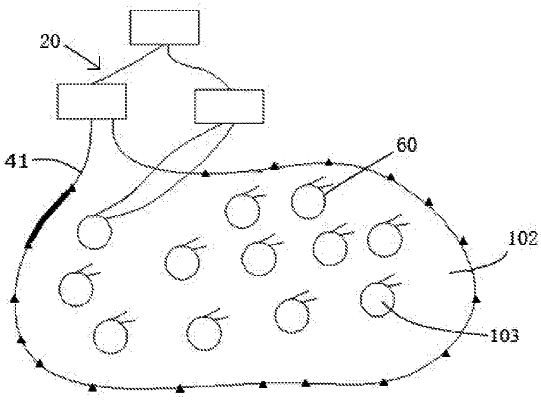| CPC G01V 3/38 (2013.01) [F41H 11/136 (2013.01); G01V 3/12 (2013.01)] | 14 Claims |

|
1. A method for discovering an unexploded ordnance in a target area, the method comprising:
partitioning the target area into a plurality of detection regions;
placing a first transmitting coil and a first receiving coil of a first transient electromagnetometer to surround the plurality of detection regions one after another, and acquiring a plurality of first feedback signals respectively corresponding to the plurality of detection regions by the first transient electromagnetometer, the first feedback signals being first induced electromotive force signals;
judging whether there is an abnormal signal in the first feedback signals, and when there is the abnormal signal, determining the detection region corresponding to the abnormal signal is an abnormal region;
arranging a plurality of detection sites in the abnormal region;
scanning the plurality of detection sites one after another by a magnetic field gradiometer to acquire second feedback signals respectively corresponding to the plurality of detection sites, the second feedback signals being magnetic field gradient signals;
placing a second transmitting coil of a second transient electromagnetometer to surround the abnormal region, placing a plurality of second receiving coils of the second transient electromagnetometer to respectively surround the plurality of detection sites, and acquiring third feedback signals respectively corresponding to the plurality of detection sites by the second transient electromagnetometer, the third feedback signals being second induced electromotive force signals;
acquiring location information of the plurality of detection sites;
obtaining a feature spatial distribution map of the abnormal region according to the second feedback signals, the third feedback signals, and the location information; and
judging whether there is any unexploded ordnance in the abnormal region according to the feature spatial distribution map;
wherein the obtaining the feature spatial distribution map of the abnormal region comprises:
obtaining a magnetic conductivity spatial distribution map of the abnormal region by parametric inversion according to the second feedback signals and the location information;
obtaining an apparent resistivity spatial distribution map of the abnormal region by parametric inversion according to the third feedback signals and the location information; and
fusing the magnetic conductivity spatial distribution map and the apparent resistivity spatial distribution map to form the feature spatial distribution map of the abnormal region.
|